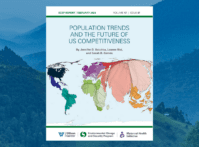“We journalists tend to deal with the immediate crisis,” Tim Wheeler, an environmental reporter with the
Baltimore Sun, told an October gathering of the
Society of Environmental Journalists in Madison, Wisconsin. Because the effects of population growth largely won’t be felt until the future, the subject is challenging for journalists who, as a whole, “tend not to look down the road too far.”
There are, however, other challenges, ranging from funding to ideology. Falling profits have pushed newspapers into expanding “hyperlocal” coverage at the expense of other stories and editorial boards are reluctant to risk increasingly important readership over a topic that, when brought to its logical conclusion, can enflame sensitivities over immigration and abortion.
On the positive side, Wheeler noted an increase in the number of articles covering intersects of population and the environment. As an example, he pointed to a Baltimore Sun series on the Chesapeake Bay citing growing population as a reason that 25-year efforts to restore the Bay have had a limited impact. Nevertheless, he lamented that the majority of articles covering population were op-ed opinion pieces rather than hard news coverage.
Without knowledge of the population-environment connection, Wheeler says, efforts to reduce our environmental impacts will run into the same problem as those to restore the Chesapeake Bay. “We’re going to wake up . . . after 25 years and say, ‘After all that we’ve done and spent, why haven’t we made greater progress?’” He underscored that, to ensure reductions aren’t outpaced by overall growth in population, issue awareness is essential.
 A Publication of the Stimson Center.
A Publication of the Stimson Center.






